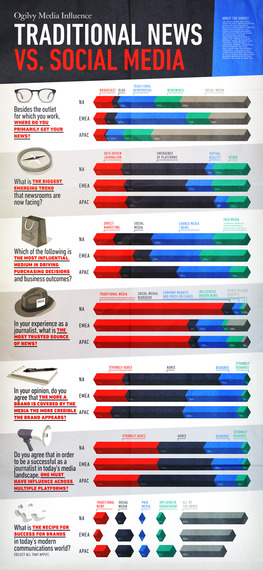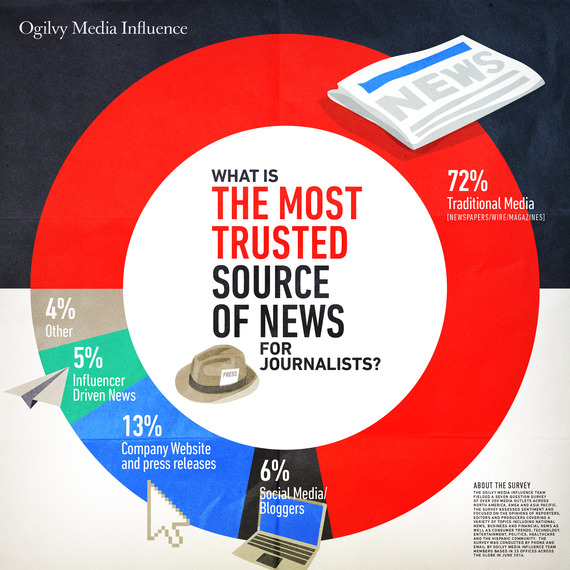How Journalists and PRs both grasp the rise of integrated media
Journalists and PR professionals are often wrongly seen as adversaries. This is because too often, PRs do not take enough time to educate themselves on the changing priorities and concerns of editors and reporters.
Journalists, like us in PR, exist in one of the most turbulent times their industry has experienced and it is crucial for us to appreciate what they think of the emerging technologies and platforms that are shaping audiences' behavior today.
We cannot possibly create effective media strategies without a genuine understanding of what they deem newsworthy, and we, in turn, need to know how media professionals consume media, what sources they trust and what tools they use to tell and sell their stories.
With this goal in mind, in June 2016, our worldwide team at Ogilvy Media Influence spoke with over 200 journalists (from a range of outlets across traditional or legacy outlets, digital-first publications and even prominent bloggers) in 23 offices across North America, Asia Pacific and EMEA.
It turns out that what we share is far more powerful that what divides us. Journalists, like us in the PR and Communications industry, are also acutely aware of the importance of emerging platforms and integration.
The stereotype of techno-phobic reporters hunched over a type-writer (which still surfaces too often in books and films!) is plain wrong.
More than half of journalists (54%) said that the emergence of new platforms is the biggest trend facing newsrooms today, and a growing number of the journalists that we spoke to (40 percent) agreed that in order to be a successful in today's media environment, they had to have influence across multiple platforms.
It's not enough to just have a daily byline and call it a day. To break through the noise and become an UBER media influencer, a journalist needs to do things like cultivate a following on Twitter, know how to create content for Instagram and Snapchat, and make regular TV appearances on cable news shows.
We also found that social media has evolved from being a channel that distributes the news, to one that informs it, with over 50 percent of surveyed journalists citing that they use social media as a source for stories they will cover.
However, despite the rise of social media as an additional source of content, nearly three quarters of respondents (72 percent) felt that traditional media outlets were the most trustworthy news source. Stories on Twitter may burn bright, but without being sustained from credible news outlets, they will fade quickly.
These findings underpin much of our client engagements at Ogilvy. We know that social media remains an important distributor of content and an effective way to drive conversation, but credibility and trust can be built in a brand more effectively via the endorsement of traditional news outlets. As modern PR professionals, we must consider the importance of integration, and must incorporate traditional media outreach and UBER media influencer engagement as a cornerstone of any and all campaigns moving forward.
A version of this article first appeared on Brandchannel: http://www.brandchannel.com/2016/08/03/media-ogilvy-080316/
Ben King, Account Director on the Ogilvy Media Influence team contributed to this piece.



